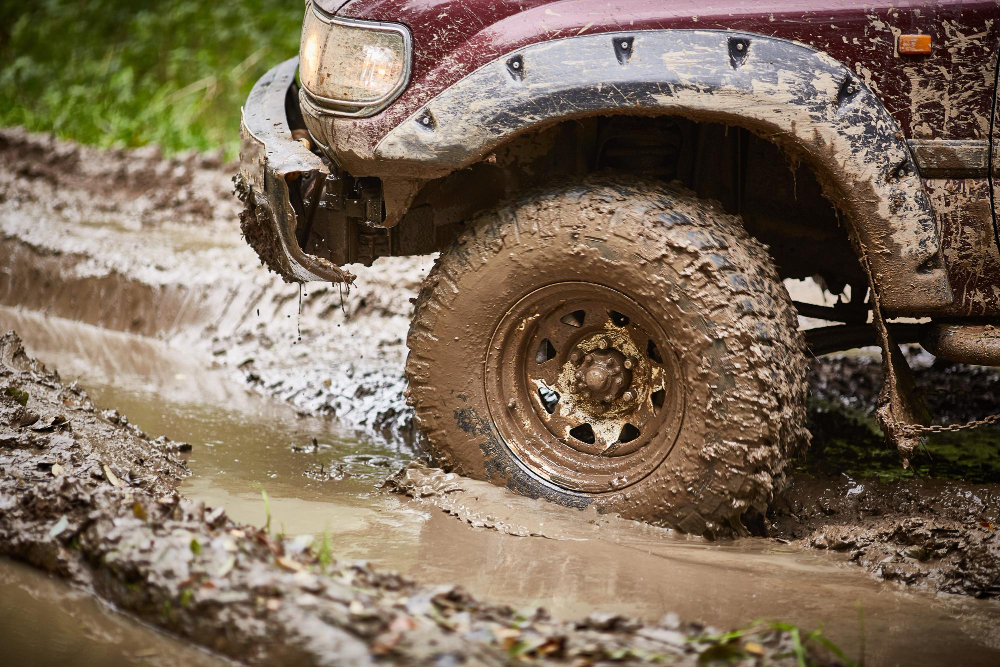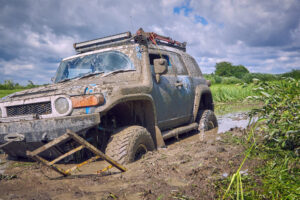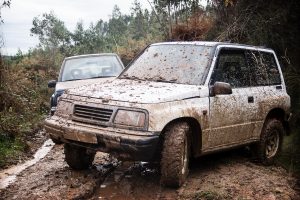Ever been on a thrilling off-road adventure, only to find yourself stuck in the mud or sand with no way to get out? It’s a common scenario that every off-roading enthusiast dreads. But what if you had the right tools to turn a potential disaster into a minor setback? That’s where an off road recovery kit comes in.
At Agile Towing Company Cary, we’ve seen countless cases where a well-equipped recovery kit made all the difference. Serving the Triangle region, including Cary, Raleigh, Apex, Holly Springs, RDU, and Morrisville, we’re here to help you stay prepared. If you ever need professional off road recovery service, reach out to us at (919) 276-5900.
In this article, we’ll dive into the essential components of an off road recovery kit, how to assemble your own, and why it’s a must-have for any off-road adventure. By the end, you’ll be equipped with the knowledge to handle any off-road challenge with confidence.
What is an Off Road Recovery Kit?
An off road recovery kit is a collection of tools and equipment designed to help you get your vehicle unstuck and back on track during off-road adventures. These kits are tailored to address common issues faced by off-road drivers, such as being bogged down in mud, sand, or snow.
Essential Components of an Off-Road Recovery Kit
- Recovery Straps and Shackles: Recovery straps and shackles are the backbone of any recovery kit. These sturdy straps, often made of nylon, are designed to withstand heavy loads and can pull your vehicle out of tough spots. Shackles, usually made of steel, connect the straps to your vehicle securely.
- Winches: A winch is a powerful tool that can pull your vehicle out of precarious situations. Whether manual or electric, winches provide the muscle needed to free a stuck vehicle. Electric winches are more common due to their ease of use and efficiency.
- Traction Boards: Traction boards are essential for providing grip on slippery surfaces. When your wheels are spinning in mud or sand, placing these boards under your tires can give you the traction needed to drive out.
- Recovery Jacks: Recovery jacks, such as Hi-Lift jacks, are versatile tools that can lift your vehicle, allowing you to place traction boards or repair tires. They are particularly useful in uneven terrain where a standard jack might not be effective.
- Tire Repair Kits: A flat tire can quickly turn an off-road adventure into a hassle. A tire repair kit, complete with plugs, a tire gauge, and an air compressor, can fix minor punctures and get you back on your way.
Additional Useful Items
- Gloves and Protective Gear: Safety should always be a priority. Heavy-duty gloves protect your hands during recovery operations, while other protective gear ensures you stay safe while handling equipment.
- Shovels: A sturdy shovel can be a lifesaver when you need to dig out your wheels. Compact, foldable shovels are convenient and effective for off-road situations.
- Lighting: Good lighting is crucial, especially if you’re off-roading at night. Portable LED lights or headlamps can illuminate your work area, making recovery operations safer and more efficient.
Assembling Your Own Off-Road Recovery Kit
Budget-Friendly Options
Building a reliable off-road recovery kit doesn’t have to cost a fortune. To assemble a cost-effective kit without compromising on quality, shop smart by taking advantage of sales, discounts, and clearance events at local automotive and outdoor stores, and explore online marketplaces for great deals on second-hand equipment.
Prioritize essential equipment by focusing on the most crucial items first, such as recovery straps, shackles, and a basic shovel, and gradually add more specialized tools like traction boards and winches as your budget allows. Opt for quality over quantity by investing in fewer, higher-quality items rather than a large number of cheaper tools, ensuring reliability and reducing long-term costs. For some items, such as storage solutions, consider DIY options using materials you already have, like a sturdy toolbox or a heavy-duty bag.
Customizing Your Kit
Every off-road adventure is unique, and your recovery kit should be tailored to meet your specific needs. To customize your kit effectively, start by assessing the types of terrain you most frequently encounter. If you often drive through sandy areas, invest in traction aids like sand tracks or traction boards, while for muddy or rocky trails, prioritize winches and recovery straps. Consider your vehicle-specific needs, as heavier vehicles like Jeeps or trucks require stronger recovery straps and more powerful winches compared to lighter SUVs or ATVs. Tailor your kit to your personal preferences and ease of use; if you favor manual tools over electric ones, ensure you have the necessary physical strength and skill to operate them effectively. Lastly, take climate considerations into account; if you off-road in extreme weather conditions, include weather-resistant gear such as a snow shovel and additional warm clothing for snowy regions.
Storage Solutions
Proper storage is crucial for keeping your recovery gear organized, accessible, and in good condition. Here’s how to optimize storage for your off road recovery kit:
- Durable Storage Containers: Use robust storage boxes, bags, or cases that can withstand the rough conditions of off-roading. Look for containers that are waterproof and dustproof to protect your equipment.
- Efficient Organization: Organize your gear logically so you can quickly find what you need in an emergency. Use compartments or dividers to separate different types of tools. Labeling each section can also save time and reduce stress during a recovery situation.
- Space Optimization: Ensure your storage solutions fit neatly in your vehicle without taking up too much space. Utilize under-seat storage, roof racks, or trunk organizers to keep your gear secure and out of the way when not in use.
- Accessibility: Place frequently used items, such as gloves and recovery straps, in easily accessible locations. This ensures you can quickly grab them when needed without having to unpack your entire kit.
Training and Practice
Importance of Knowing Your Gear
Having the right tools is only half the battle; knowing how to use them is equally important. Spend some time familiarizing yourself with each component of your recovery kit. Practice using the equipment in a controlled environment so you’re prepared when you need to use it for real.
Local Workshops and Resources
Consider attending local training workshops or joining off-road clubs in the Cary area. These resources can provide hands-on experience and valuable tips from seasoned off-roaders. It’s also a great way to meet fellow enthusiasts and learn from their experiences.
Conclusion
An off-road recovery kit is not just a collection of tools; it’s a lifeline that ensures your off-road adventures remain fun and safe. By understanding the essential components and how to use them, you prepare yourself for any challenge the trail throws your way.
At Agile Towing Company Cary, we understand the importance of being prepared. If you ever find yourself in a sticky situation and need professional assistance, don’t hesitate to reach out to us at (919) 276-5900. Stay safe and enjoy your off-road adventures with confidence!



